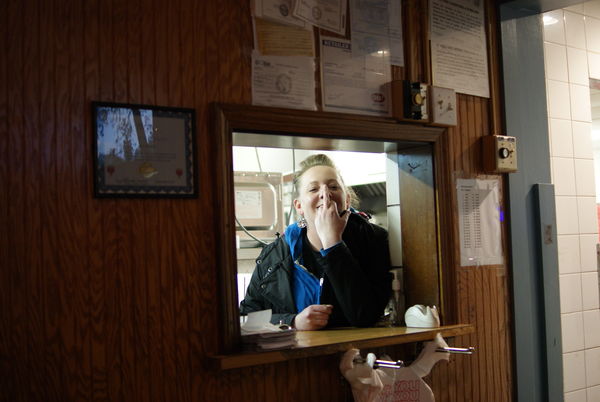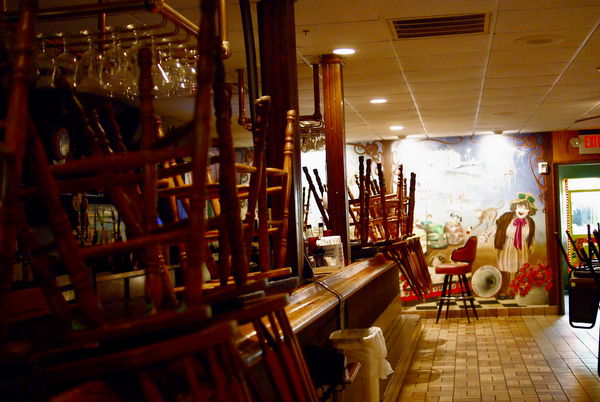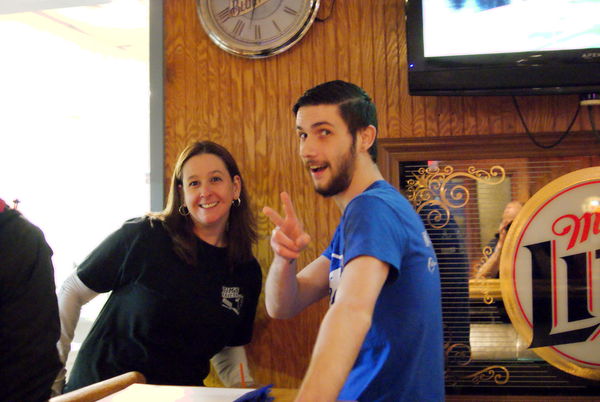Posts for: alycat
Jun 24, 2016 01:02:16 #
Arco Plano Photo Stitcher works very well for me.
May 29, 2016 01:43:29 #
If it ain't sharp enough, sharpen it in post processing. that's what you're paying Photoshop to do.
May 8, 2016 01:14:30 #
Bret wrote:
First time shooting at Studio 58 in Cincinnati...and I have to admit Iv'e never seen so many alien bee flash heads in one place. Must have been at least 20 of them all set up on stands...with just about every light modifier you could imagine. Model for this shoot is Ashley McNutt...fashion model from Canada.
I'm McNuts over her.
May 4, 2016 01:38:09 #
daythedog wrote:
A few from when we were kids
You have a good eye, and a sense of what makes a good photo.
May 1, 2016 01:30:46 #
Revet wrote:
If you are talking about very large prints (ie. ones you can't do yourself on a home printer) I would ask the printer service you are going to use. I recently did some 48 in by 48 in prints for my office and the printer wanted TIFF files. You can always change them later which is what I did since all my photo's are in DNG format.
Several years ago when 7mps was pretty good, My daughter wanted a print of a weeping willow tree. I said how big, she said real big. A link on the Walmart website offered large prints delivered to the local Walmart store. We ordered a 20 x30. I was surprised how good it looked and its still on her wall. If you want a print just give it a shot at a big one and see how you like it. My 20x30 cost $19.95 The camera by the way was an Olympus superzoom.
Apr 29, 2016 01:23:33 #
rmalarz wrote:
While writing another article which contained refe... (show quote)
You sound like you just invented these basics of photography. These facts have been around for 120+ tears.
Apr 24, 2016 01:06:39 #
adufu1wy wrote:
Your thoughts. I know you have different thoughts but that is how I want to portray my views.
I was born in Detroit. I remeber going to Belle Isle. In the late '30's they had a zoo there, some amusement rides, and lots of stuff 4 year olds would like. As a 4 year old I didn't look across the river to the skylne.
Apr 16, 2016 01:38:16 #
wingclui44 wrote:
I don't agree with you about speaker-receiver comb... (show quote)
Amp first, speakers second. Many good speakers were blown out by cheap, bad amps. "specially in cars.
Apr 12, 2016 00:44:11 #
PAR4DCR wrote:
I don't think the young lady in the first shot thinks highly of you.
Don
Don
Nah, she's my friend, just like some women, always says, "Don't take my picture!!,.
Apr 10, 2016 14:38:46 #
I needed a fast normal lens for my Sony A mount. Bought the Sony DT 35/1.8 SAM used for 150$. Took some available light shots at the local pub.




Apr 5, 2016 01:31:48 #
planepics wrote:
I'm thinking after vacation I'll start saving my m... (show quote)
If your camera is an A mount, Sony has bargain priced f 1.8 lenses at 35mm, 50 mm, and 85mm in A mount, check 'em out
Apr 5, 2016 01:24:39 #
lightcatcher wrote:
The Stun Gun Photoshoot: Portraits of People's Faces When Hit With A Stun Gun
http://fstoppers.com/originals/stun-gun-photoshoot-portraits-peoples-faces-when-hit-stun-gun-33449
http://fstoppers.com/originals/stun-gun-photoshoot-portraits-peoples-faces-when-hit-stun-gun-33449
Schadenfreude
Apr 5, 2016 01:14:13 #
buglinbilly wrote:
Its taken me two years and lots of shots to finall... (show quote)
It's not a good photo, it's a great photo. You can have a so so photo with perfect sharpness, color, and technical perfection, but the subject alone can make it a great photo.
Mar 30, 2016 00:41:29 #
mill_A wrote:
I am an amateur photographer with an RX100m2 which... (show quote)
You can learn a lot by experimenting with different settings, but a good book on the basics would get you on the track to understand what makes pictures with any camera. Shutter speeds, f/stops, focus, Iso, and composition need to be understood to become a photographer.
Mar 22, 2016 01:14:27 #
Old44 wrote:
Most of my time in photography has been spend purs... (show quote)
i'm 80 and can still handle a Sony A330 and a Tamron 50 - 300, the problem I can't walk long distances. The quest for sharpness seems to me to be worried about too much. Most gear today will deliver enough sharpness, and if not enough, use photoshop to tweek it.